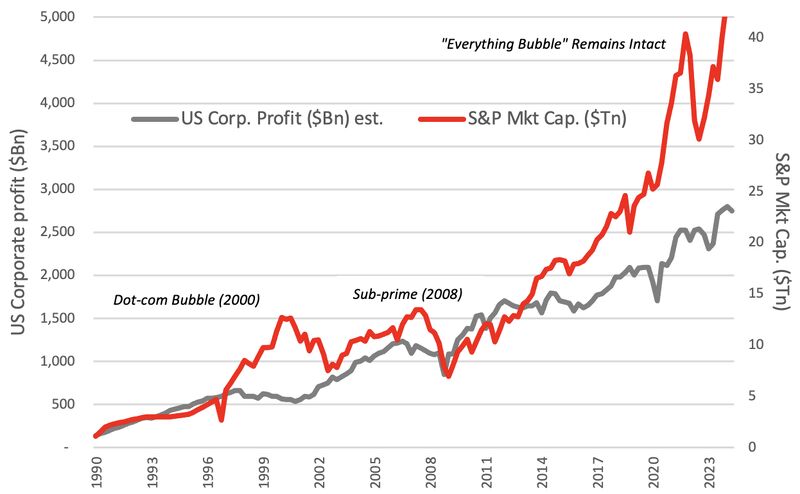They say history doesn’t repeat itself, but it certainly rhymes. Not unlike the 1920’s, we too reside in an era of technological disruption, work from home, including machine learning, the IoT, automation, robotics and AI. Likewise, the explosion of credit, the ability to buy fractional shares using margin borrowing and Apps, has introduced an entirely new generation to the appearance of “free money”.
This raises an interesting conundrum, the possibility that the long-term success of capitalism relies on funds flowing into speculative ventures. Then at regular intervals, these extravagant technological missives eventually morph into speculative bubbles, until at some point, valuations do matter, and the market mean-reverts. In this framework, it could be argued that bubbles are a capitalist necessity (minus the financial excess), in which enormous sums are invested into infrastructure, research, establishing new business models, creating efficiencies and opportunities, which were inconceivable, even five years ago.
It is the ultimate cliché that market bubbles continue for far longer, and reach levels much higher than ever anticipated, and so it has for this current bubble. Looking at the largest market bubbles in history, there is an uncanny consistency in how these markets breakdown. When investors speculate, they largely do so indiscriminately, which allows us to gauge where we reside within the general market cycle. In particular, the transformation from optimism to pessimism is strongly related to the uniformity in direction among all sectors, industries, commodities and stocks. On that front, the S&P equal weight is at levels last seen in early 2022, and has declined over the past month.
Although impossible to accurately delineate what specifically triggers a collapse in a particular market bubble, what is evident is that the deflation event is more of a process than any specific spark. Current markets are at extreme levels. We estimate that a 40% decline in the S&P500 would only depress stocks to long-term valuations based on profitability measures (i.e. we would expect the S&P red and profitability grey lines in the diagram below to converge at some point).

